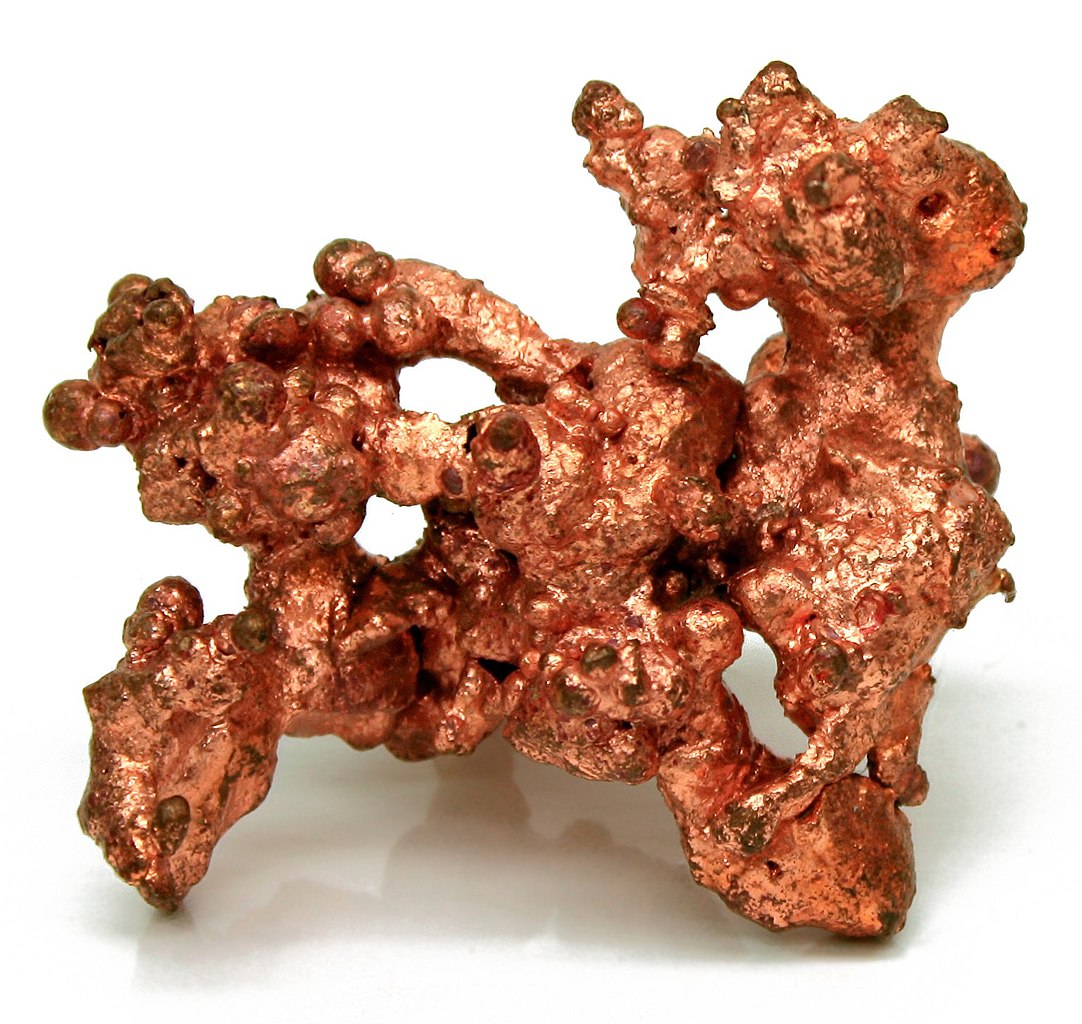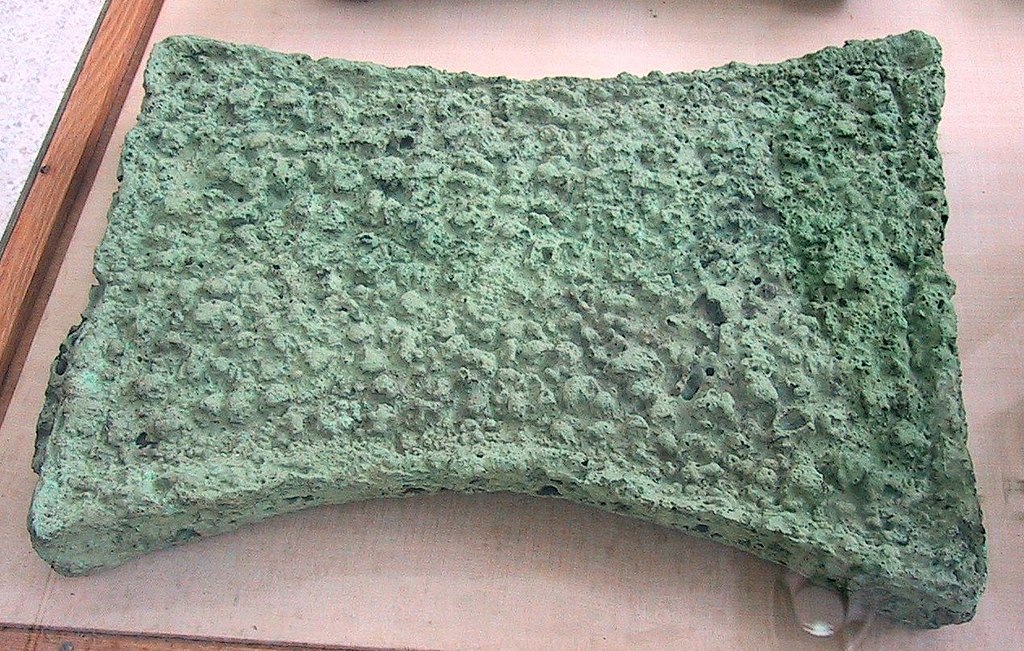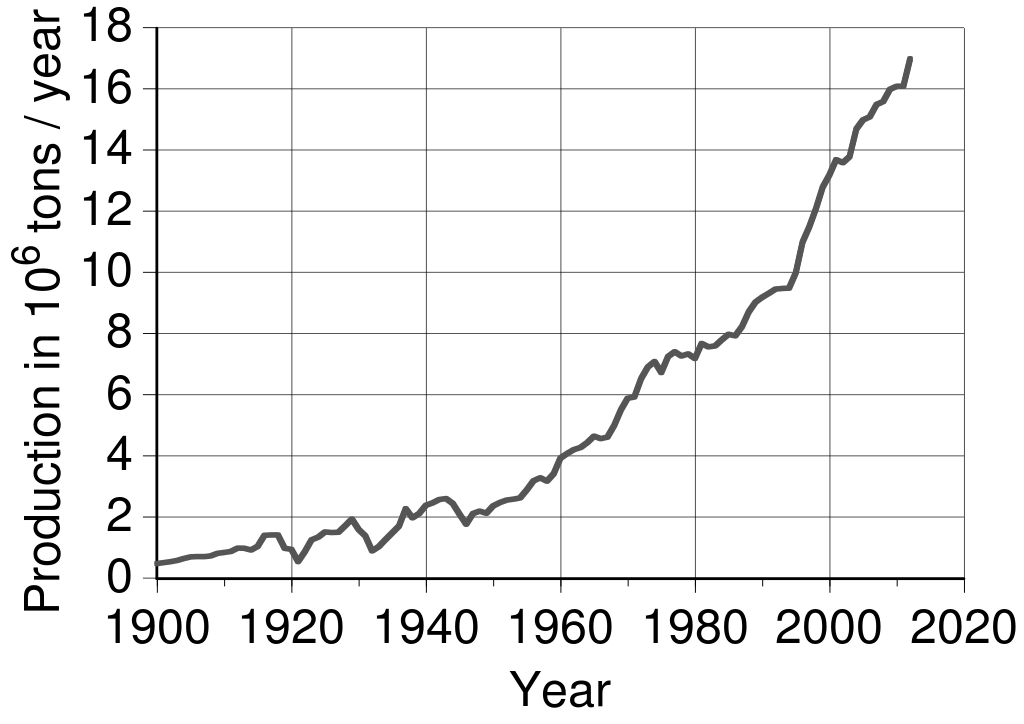Copper / copper powder / copper ingot
Copper is a soft, ductile, and highly conductive metal that has been used in human society since ancient times. Gold and meteoric iron were the only metals that existed prior to the discovery of copper around 9000 BC. have been proven. This early use was facilitated by the presence of native copper deposits that could be cold worked due to the softness of the metal. However, native copper is not particularly common and eventually the smelting of copper from ore was developed, which in turn led to the inadvertent discovery of alloys.
Adding another metal to copper increases hardness and facilitates casting, which makes the metal much more useful. This was initially done by smelting copper ores containing small amounts of other metals, often arsenic and silicon, to produce a natural bronze. Later it was discovered that bronze could be purposely made by adding tin to molten copper. This advance occurred between 4500 v. Chr. And 600 v. Chr. In various regions of the world. Today, bronze production is considered to be one of the most important technological achievements, so that the period between this discovery and the development of molten iron is often referred to as "Bronze Age" in any society.
The introduction of bronze allowed the protection of harder and more durable metal tools and weapons. Bronze was so important to the civilizations of the time that the story was shaped by the trade in the relatively rare tin ore needed to make it. Although copper was easier to obtain, its sources were also relevant to ancient societies and indeed led to the naming of the element. In the Roman Empire, copper was most commonly mined on the island of Cyprus, and the modern name of the metal derives from the Latin cuprum, which itself derives from Cyprium and means "metal of Cyprus".
Although alloys have many preferred uses over pure copper metal, architecture has used elemental copper since ancient times. The patina that develops the metal over time provides a natural coating that makes it extremely durable and low-maintenance, and its malleability can be molded into the shapes you want. Today, copper is most commonly used in architecture in roofs, lightning, gutters and downspouts
Other metals than tin were later used for alloying with copper, especially nickel and zinc. Brass, an alloy of zinc and copper, is more malleable than any single metal, easier to cast and has excellent acoustic properties. Initially, brass has been used in coins and decorative purposes, while today it is widely used in brass musical instruments, plumbing and electrical applications, and in applications such as locks where low metal-to-metal friction is required. Copper nickel alloys, including ancient Chinese pactong and European nickel silver, were originally used in a variety of applications and are still used in the manufacture of coins, fittings and musical instruments. Copper is also included in some gold alloys and in sterling silver.
In addition to the widespread use of copper and copper alloys for tools, instruments, money and building materials, ancient societies used copper for its antimicrobial properties. Although the ancient Egyptians did not understand that copper prevented the growth of microscopic organisms, they found that water stored in copper vessels was less likely to heal fouled and copper-treated wounds. Today, copper is still used in this capacity in a variety of environments, particularly in hospitals where copper coatings on frequently contacted surfaces help limit the spread of pathogenic organisms.
Current applications for copper often use one of its properties that has not been of much interest to most of our history: electrical conductivity. Copper can easily be pulled into wires and is the preferred electrical conductor for most wiring applications. About half of the total copper mined is used in this way. Not only is copper highly conductive, it also has high tensile strength and low thermal expansion and resists corrosion and creep. These properties together lead to a reliable circuit arrangement. The high conductivity of copper also increases the energy efficiency of electric motors. Copper is also found in electronic devices such as electromagnets, vacuum tubes, magnetrons and microwaves. Copper is sometimes used in heat sinks and heat exchangers of electronic equipment because it dissipates heat faster than the most common alternative, aluminum.
Copper compounds also have many notable uses. Copper oxides and carbonates are used in pigment and glass making, and copper sulfate can be used as a herbicide, fungicide and pesticide, as well as a chemical reagent in organic synthesis. Several copper compounds are semiconductors, including copper (I) oxide, one of the materials in which many semiconductor applications have been studied for the first time. Copper semiconductors are today usually used in thin-film solar cells. Copper can also be part of high-temperature superconductors, copper is often used as a catalyst in organic synthesis.
Naturally occurring metallic copper has at times played a significant role in the commercial delivery of the metal, but most of the copper is contained in sulfide, carbonate and oxide minerals. Copper sulfides are the main copper ore, and after separation of iron and other undesirable material, they are roasted to produce the oxide. Copper oxide is then converted to blister copper by heating and further purified by electrorefining. Copper is also recyclable without loss of quality and, after iron and aluminum, the third most recycled metal.




